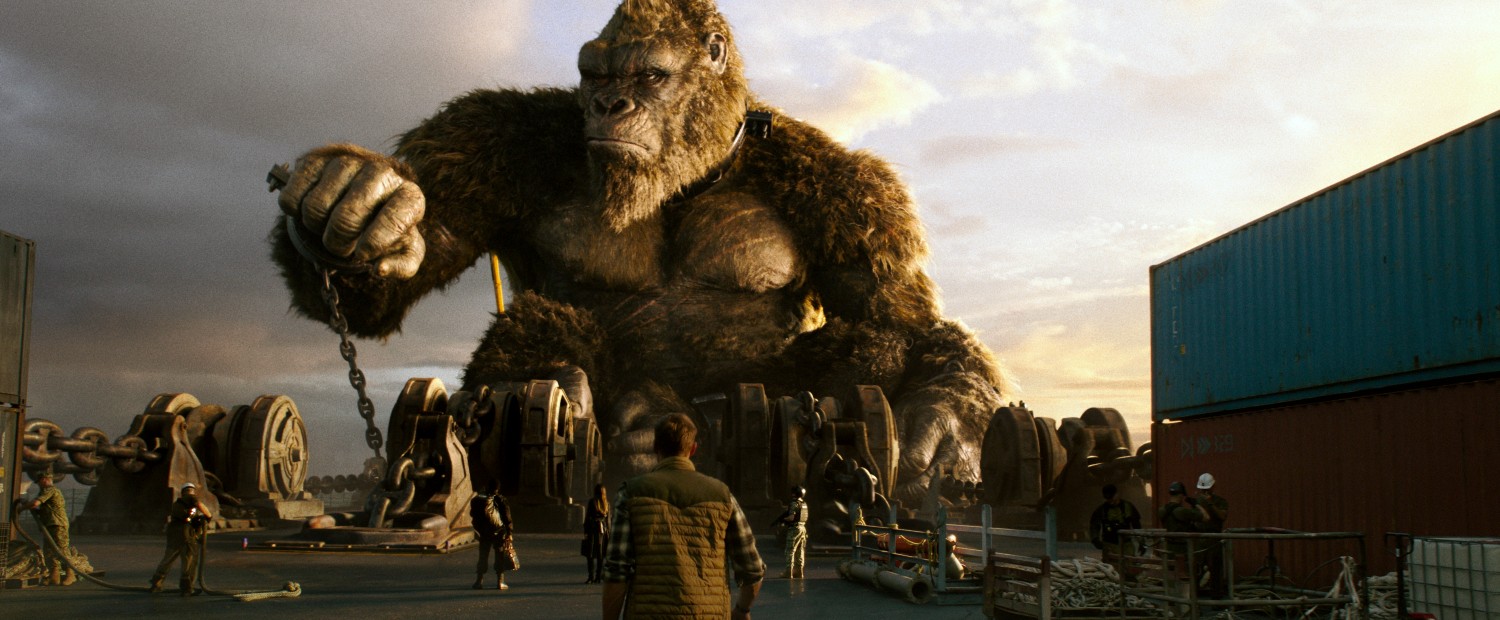
For the third and final part in Below the Line’s look at the visual effects for Warner Bros. and Legendary Pictures’ Godzilla vs. Kong, we speak to Bryan Hirota, the movie’s VFX Supervisor, who has been working in the realm of visual effects since the ‘90s. He has worked on everything from The Matrix Reloaded and Revolutions to X2 and X-Men: The Last Stand, and some of Zack Snyder’s movies like Watchmen and Sucker Punch. A lot of that work was with GvK’s VFX Supervisor John “DJ” DeJardin.
Hirota has been at Scanline VFX since 2014, although Scanline has been “around longer than that,” he told Below the Line over Zoom a few weeks back. “They started in Germany, but I don’t know what’s considered their home. I work out of their L.A. office, but they have offices in L.A., Vancouver, Montreal. Seoul, I think Stuttgart, Munich, and London.”

Besides Godzilla vs. Kong, Hirota was also involved with both the theatrical version of Justice League, as well as Zack Snyder’s version, plus he did a few other projects in between, including Godzilla vs. Kong, Aquaman and James Gunn’s upcoming The Suicide Squad. He and Scanline are also doing visual effects on the upcoming The Flash, which just started filming this week.
“When DJ got on the project, we talked about working on it together,” he tells us about joining the vast GvZ VFX team. “Scanline’s forté is doing these big simulations and destruction. He wasn’t quite sure how the fit would go, animating these big creatures, especially Kong, who has a heavy emotional component to them. One thing we did — maybe it was in 2017? I was wrapping up post on Aquaman, but we did a test for DJ and the studio, where we picked four shots involving both creatures. We took in the Skull Island Kong asset, and we went through the process of aging him up, making him bigger, giving him a little bit of gray hair a little beard and stuff and presenting that back as a test just to give people confidence that we could do this. It went over pretty well with people. The shots we did were all in the ocean battle for the test, and a shot of Kong in the rain on the transport ship. DJ really liked them, Adam really liked them, Legendary really liked them. They actually liked what we had done so much with the aging of Kong that we got the job of building the hero asset for Kong to give back to Weta and MPC for the Old Man Kong.”
“I think at that point, they thought, ‘Well, okay, Scanline should do the ocean battle, the stuff at sea, especially since Scanline’s history is so intertwined with doing complex, fluid simulations,” he told us about how Scanline was picked for their scenes. “That seemed like a good fit. I don’t remember when we got involved with Mechagodzilla. All the Mechagodzilla stuff in the film we did as well. Those tests we did were in pre-production and then we shot the movie and moved into post, but at some point along the way, we picked up Mechagodzilla and the final fight between Mechagodzilla and Kong.”
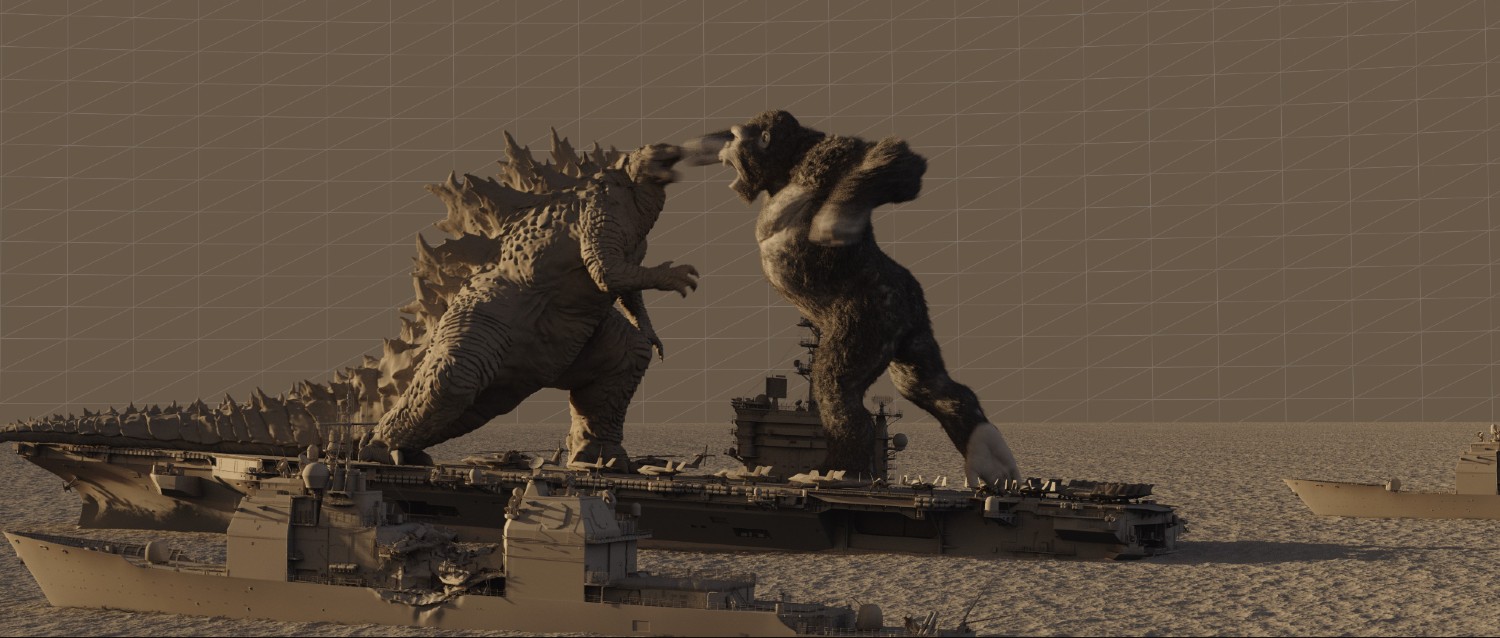
Hirota spoke about getting the scales of Kong and Godzilla right in their scenes together and when they’re in familiar spaces like Hong Kong. “It’s tough. I think if you see something in a shot that is of a known scope, that helps you,” he said. “And then if you have other effects in there, like dust, or the hair movement, or water, or dirt coming off of the hair, or off of the creatures, those things are also stuff I think that as a person, you recognize that sort of behavior. So if you can enhance the creature or the shot with additional elements that behave in ways that tell you the viewer that “Oh, this is big,” that is helpful, because on their own, it’s just a small lizard. The problem with these creatures is you don’t really have scale for that.”

“One thing that we tried to keep in mind while working on all the shots is precisely their size and mass,” Hirota explained. “Whether they hate each other, like how they would react, and also all of the effects that they would have on the environment. If they hit stuff, they will destroy it. If they’re wet and they get punched, drips and mist and things we’ll source off of that. Also, impacts on them will create sizable impacts will create ripples in their skin and in their muscles and stuff. So really trying to follow through all the animation with secondary and tertiary simulations, to have them affect each other and affect their environments in naturalistic ways was a goal and something we were cognizant of to try to help maintain that sort of scale of these crazy gigantic creatures.”
“We tried to imagine like Mecha was built by people,” Hirota says, speaking about the movie’s robotic adversary. “When you looked at him at close-up, we tried to imagine like rivets and welds and things that could have been done by people or man-scaled machinery just so that you’ve got some impression that this thing was big.”
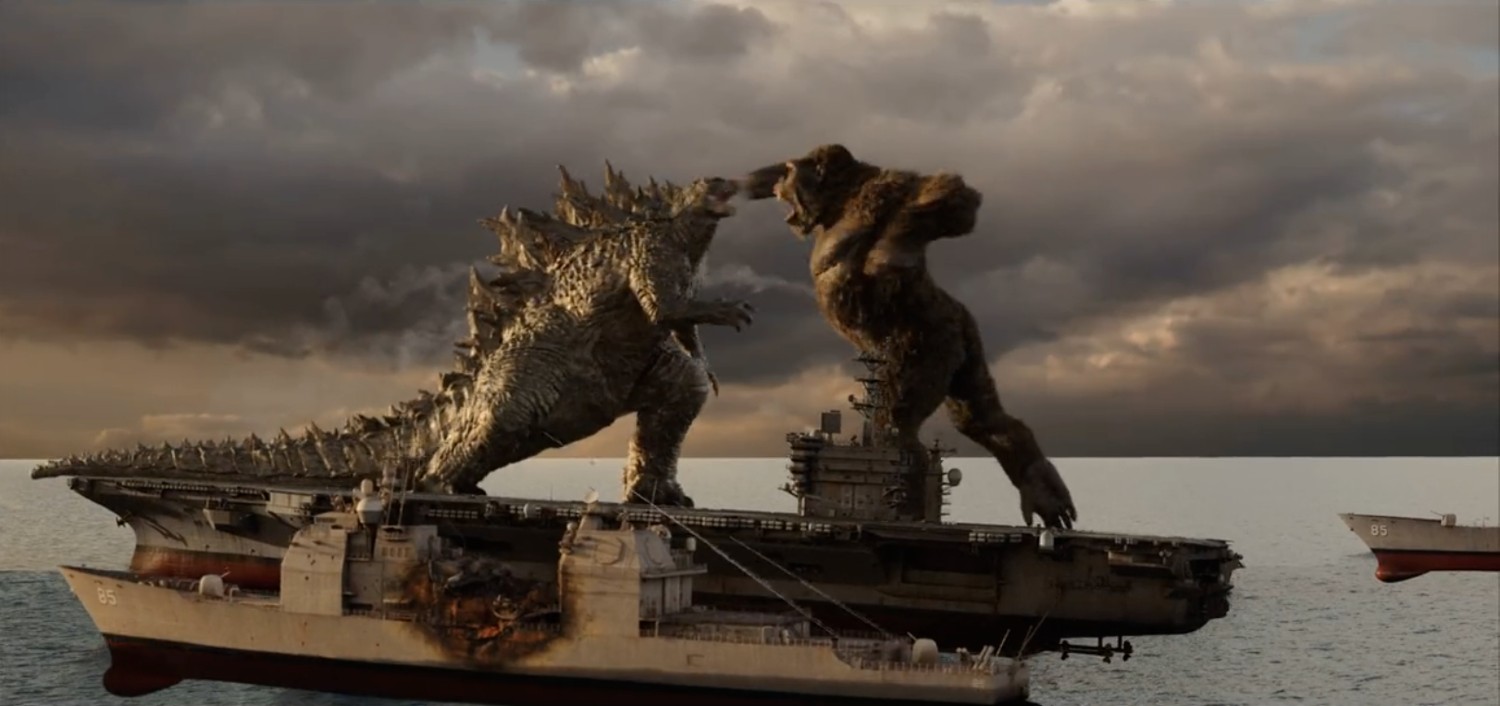
Hirota went into more detail about designing and bringing Godzilla’s long-time nemesis to life. “The art department had a design for Mecha that everybody liked and that Toho signed off on. So then that got turned over us,” he remarked. “That model was like a single, cool pose for the creature, but it wasn’t functional in that it couldn’t bend its arms and stuff without interpenetrating. It was a cool design, but we had to turn it into a functional model. We would go through, and we would attack all the joints and add articulation. I don’t know how much of it you would actually see in the film, but anytime he bends any of these joints, like panels slide out of the way and produce articulation for the character. We would design these things for the ankles or the feet, and then we would show them to DJ and Adam, and they would thumbs up or give us notes and we would address those. And then we developed all the weapons for him, too, like the laser cannon in the mouth and the rocket thrusters and the missiles on the shoulder, so all of those weapons. Again, we went in and we added a bunch of smaller scale detail for the eyes and for all the panels and stuff as well and little struts and pistons in the ankles and in the joints, again, just to help give him scale.”
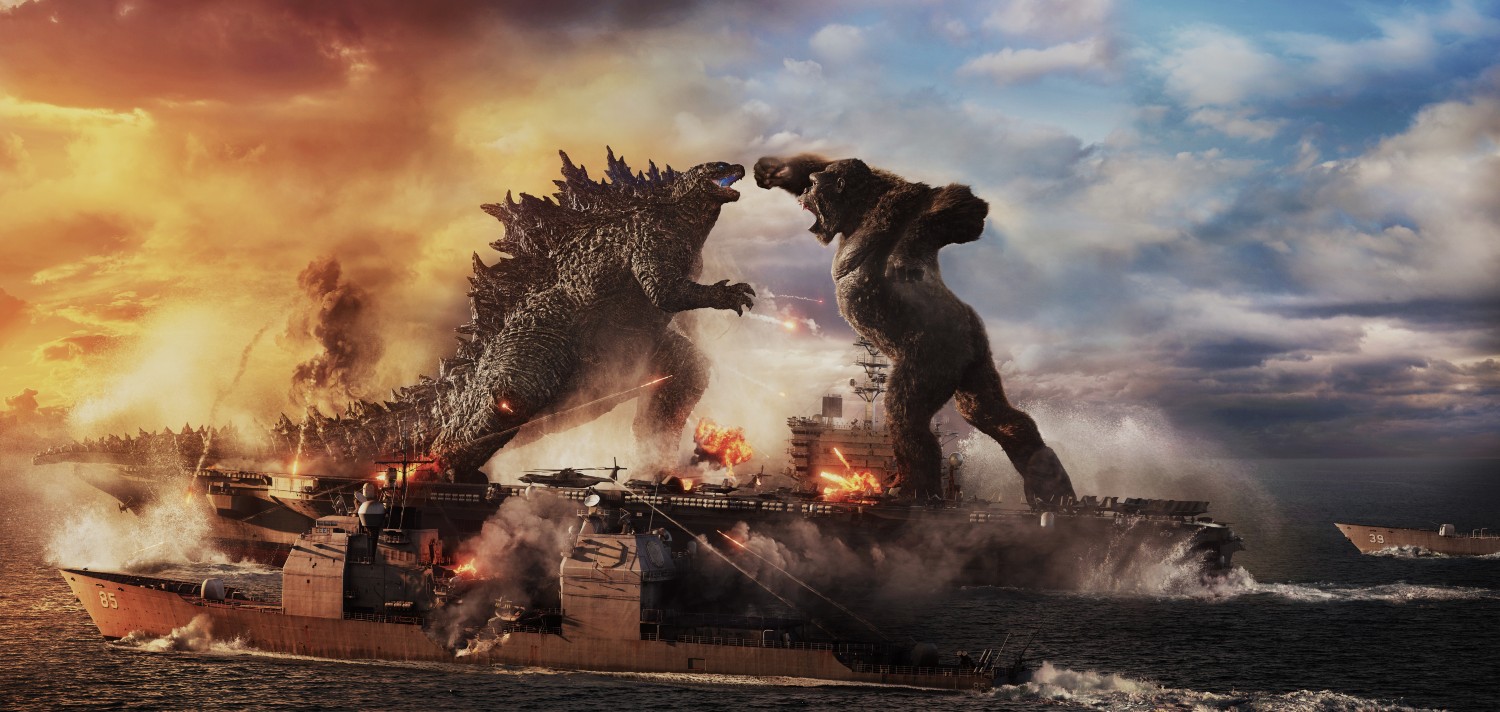
When taking on a project like Godzilla vs. Kong, where does Hirota and Scanline even begin when tackling the film’s toughest and most challenging sequences? “Stuff is kinda happening in parallel, but we need to settle on scales for these creatures, and then once everybody sort of agrees on the relative scales of Kong Vs Godzilla versus Mecha, then you need to lay out the shots, especially the ones that are all in CG,” he says. “They had to [pre]vis the ocean battle long before while in preproduction. It changed a little bit, as we went through the movie, but by and large, the main beats existed till the end. Adam had a pretty clear idea what he wanted.
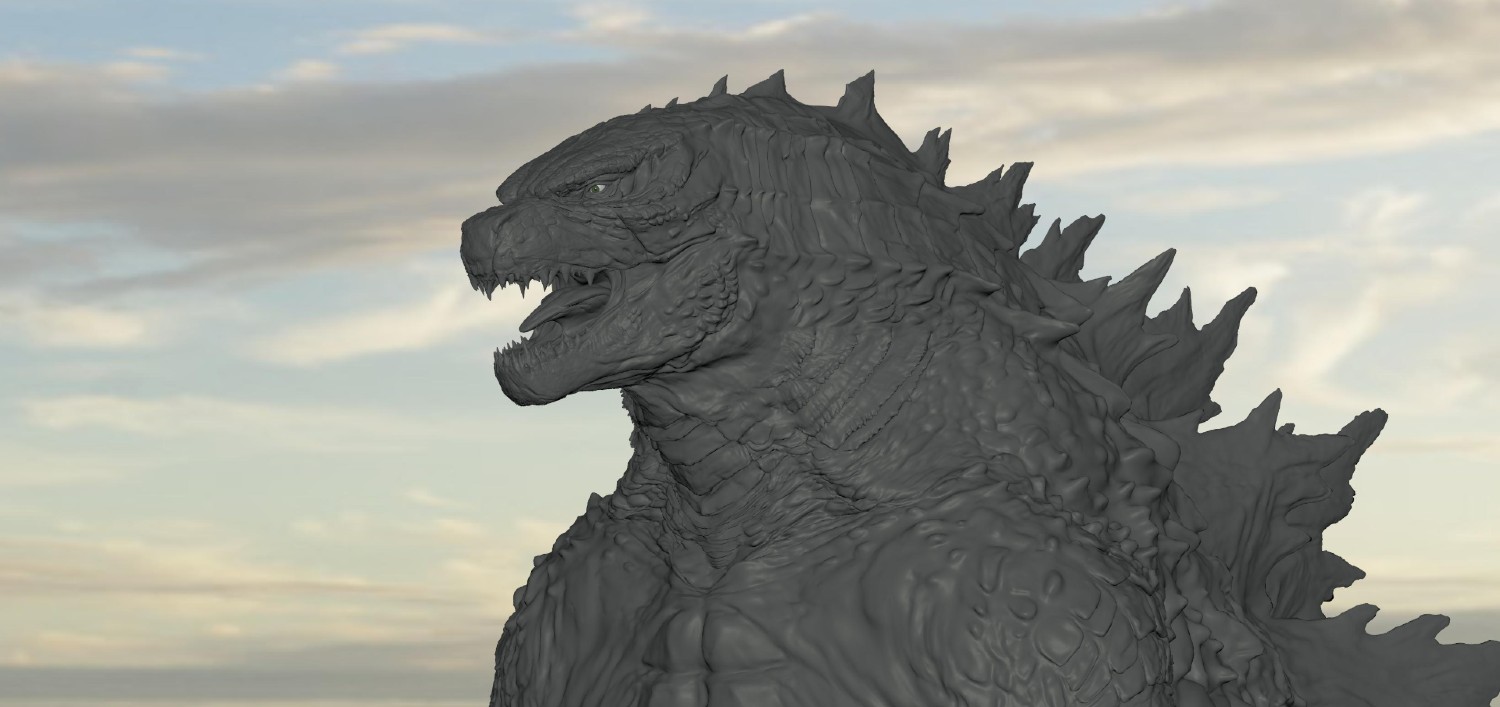
“The final battle, that changed a lot through post,” he continued. “They tried to amp up the action there. You try to get the layout done, like the main staging of, “Where’s the camera? Where are the creatures? What are their base reactions?” Once everybody approves that, then you go and finalize the animation. And then when everybody agrees that animation is done, then you start running the simulations on that — all the buildings, you start destroying them. You start simulating the muscles and the fat jiggle on the creatures, and then on the hair. Then whatever secondary effects: how they interact with the water, or is water coming off of the hair? Then you light the scene and render it and then move up to the compositor so that they polish it up and make it look beautiful.”
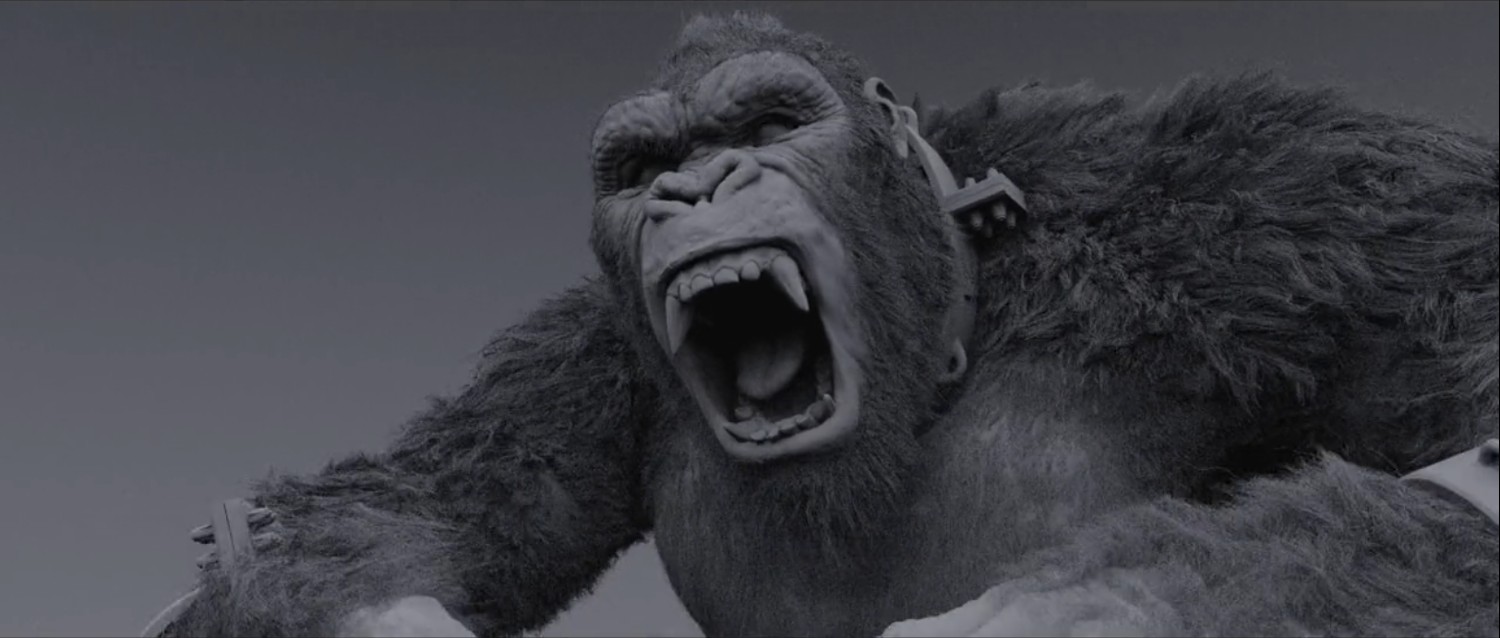
Our conversation also got around to how sharing assets between the different vendors worked.
“It depends on what’s ‘sharing’,” he responded. “We had to finish Kong to give it to Weta and MPC. Weta developed Kong’s axe, so we got the axe from them when they were done with it. Mostly, otherwise, we were fairly separate. We needed to be aware of what was happening in the Kong versus Godzilla fight that MPC was doing, because we picked it up the next morning and just needed to make sure that the characters were in reasonable places from where they left off. And if stuff would have been destroyed from there, we needed to make sure that that was represented in our work because that dovetailed after it, like the Apex headquarters. We had to make sure that MPC had that in case it was seen at night.”
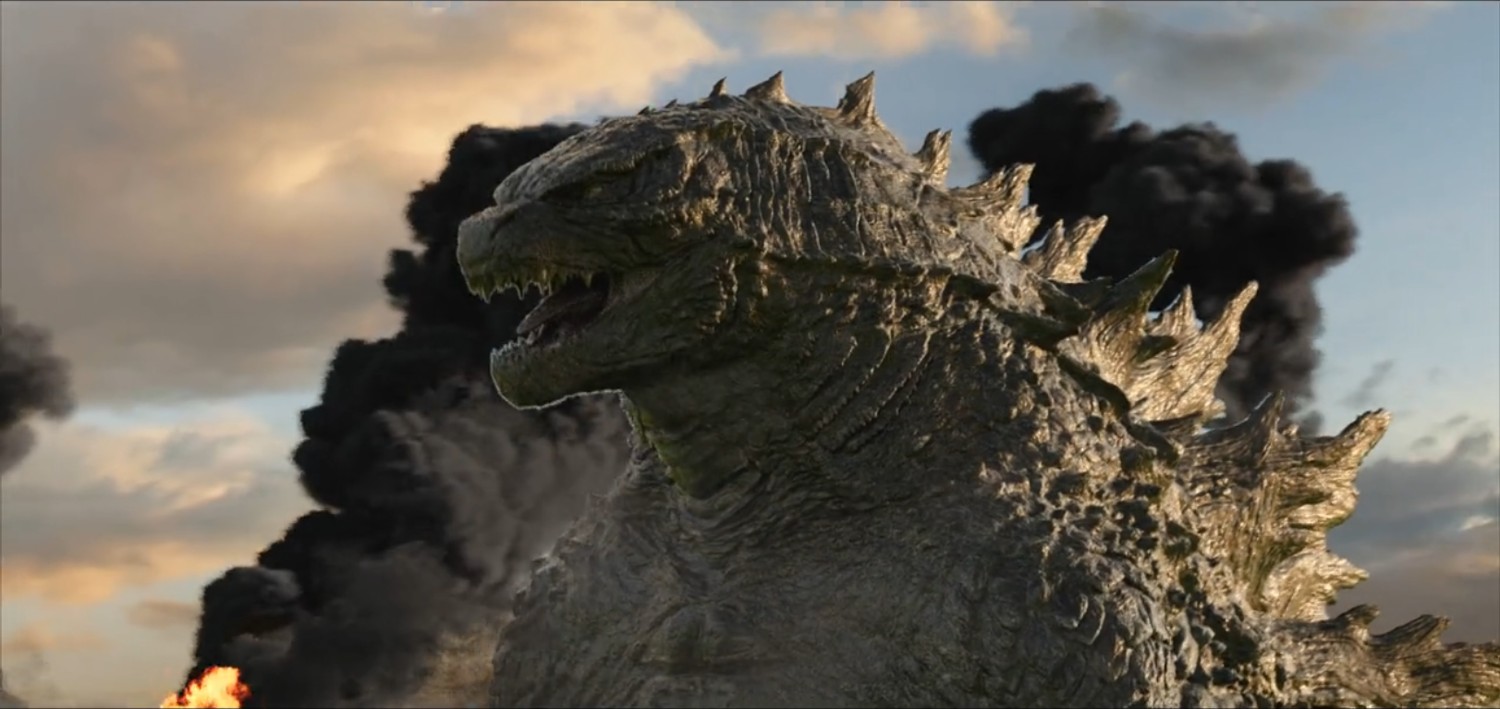
“Sharing assets on film between houses, it’s a fairly common practice nowadays, but people do need to work together as far as sharing reference,” he adds. “It’s kind of up to DJ and Adam to make sure that the creature maintains the same look and personality as it comes in from the different facilities. I feel like Kong and Godzilla feel like themselves, regardless of where they were created in this movie.”
One thing that can be somewhat puzzling for anyone who works outside the VFX realm is how it works when there are entire VFX scenes being built from the ground up, which is the case with most scenes involving Kong or Godzilla. At what point does that footage go to Wingard’s editing team to do their thing? “They’ll go into an edit, they’ll cut them in, and they’ll try them on for size and move things around,” Hirota explains. “They won’t have a solid idea of what a lot of the shots are until they cut them in with the live-action. A lot of the performance of these creatures, it’s driven from the facilities, because they’re creating the footage that then goes into the edit, and then they trim them or slip them or decide what becomes the final action for the film.”

On top of everything else, Hirota has to deal with Scanline shops spread throughout the globe from Los Angeles to Europe. Hirota has figured out how to keep the communication going whether he’s in L.A. or the U.K. “I have an effects supervisor, who’s vetting and giving direction to all the effects artists,” he adds. “To review the effects, I primarily will talk to him. His artists aren’t all in his location–some are spread out worldwide — so I might not directly interact with those artists on that level. If there’s a supervisor at one of those locations, that’s responsible for a department or sequence or something, I will interact with them. It just sort of depends on how the work is spread out, the level of interaction I have with each location.”
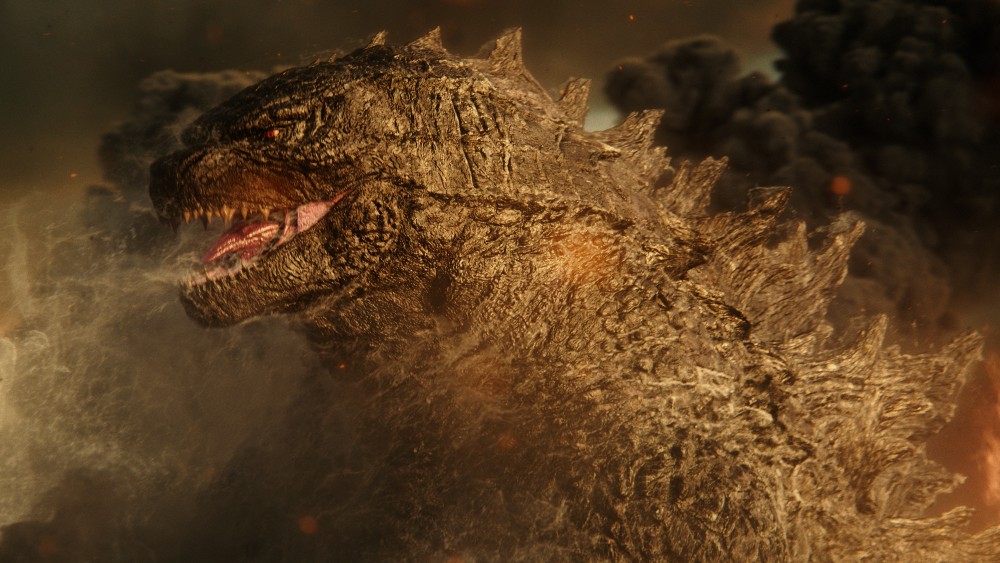
Eventually, we got to talking with Hirota about Zack Snyder’s Justice League, for which Scanline did a ton of shots and sequences, including the Gotham subway tunnel battle, some of the beach fight between the Amazons and Steppenwolf, and a lot more. “I started with DJ when Zack was on it, and Zack ultimately left the project, and we finished the theatrical, and then, last year at some time, Zack came back and did his version,” he said about the timeline, although he also did many other projects between the two versions.
“The show was dead and archived and years old. It was never archived in a way with the idea that we’d go back into it,” Hirota told us about what was involved with returning to a project years after it was seemingly finished. “Bringing it back online and really doing like a deep forensic dive almost on a shot by shot basis of what still worked? What needed to be upgraded? What state it was in on the theatrical and what does Zack want it to be now? Trying to dot all those i’s and cross all those t’s. That was a whole other layer of complications to work that you don’t normally have that made some things that seemed, at least on the one hand, kind of simple like, ‘This shot is mostly fine, but Zack wants to change these three things.’ Nothing was ever quite as straightforward as it sounded just given that you’re diving into an old, old project.”
Godzilla vs. Kong is now in theaters nationwide on HBO Max, and Zack Snyder’s Justice League is just on HBO Max. You can read our previous pieces on Godzilla vs. Kong, our interview with VFX Supervisor John “DJ DeJardin and Weta Digital’s Kevin Smith and David Clayton.
All photos courtesy of Warner Bros, Legendary Pictures and Scanline VFX. (Click on images for larger versions.)





